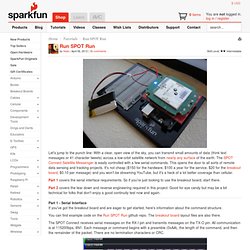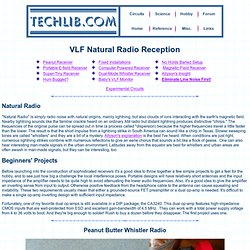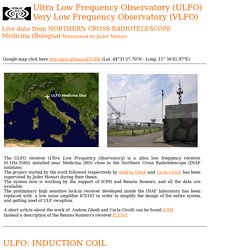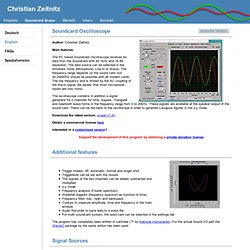

Run SPOT Run. Skill Level: Intermediate by Nate | April 06, 2012 | 36 comments Let's jump to the punch line: With a clear, open view of the sky, you can transmit small amounts of data (think text messages or 41 character tweets) across a low-orbit satellite network from nearly any surface of the earth.

The SPOT Connect Satellite Messenger is easily controlled with a few serial commands. This opens the door to all sorts of remote data sensing and tracking projects. It's not cheap ($150 for the hardware, $100 a year for the service, $20 for the breakout board, $0.10 per message) and you won't be streaming YouTube, but it's a heck of a lot better coverage than cellular. Part 1 covers the serial interface requirements. Part 2 covers the tear down and reverse engineering required in this project. Part 1 - Serial Interface If you've got the breakout board and are eager to get started, here's information about the command structure. SI4735 AM & FM Receiver Shield. Replacement: None.

Unfortunately the Si4735 has been discontinued. This page is for reference only. Description: The Si4735 is the first digital CMOS AM/FM radio receiver IC that integrates the complete tuner function from antenna input to audio output. This feature-rich solution includes advanced seek algorithms, soft mute, auto-calibrated digital tuning, and FM stereo processing. The chip also incorporates a digital processor for the European Radio Data System (RDS) and the North American Radio Broadcast Data System (RBDS), including all required symbol decoding, block synchronization, error detection, and error correction functions.
KeyStone Semiconductor Corp. MonkeyBoard. DAB DAB+ FM Digital Radio Development Board. Specifications Overview Designed in Australia, the DAB+ FM Digital Radio Development Board provides a platform for developing and evaluating DAB+ and FM receiver. The board contains a Keystone T1_L4A_8290C DAB/FM module and a Microchip PIC18F14K50 microcontroller. The T1_L4A_8290C module is an ultra low power DAB/FM receiver module with the following features: ETSI EN 300 401 compliant receiverDAB/DAB+ sensitivity to -99dBm (typical) Decodes multiple audio services up to 256kbps without external RAM FM with RDS (*** RDS reception only available for station name, station text and genre and is subjected to certain condition of power level and frequency deviation)Combined antenna input for FM / Band3Support DAB L-Band reception (*** Although the Keystone module supports L-Band, the SMA connector has no connection to the L-Band pin, customer will need to solder a separate antenna and other passive components to make it work.)Serial control interface RoHS compliant Board Dimension 78mm x 45mm.
VLF Whistler Reception. I painted my tin with gray hammertone paint and affixed a label to the lid.

The circuit is built on a piece of polished copper clad circuit board sprayed with a light coat of clear Krylon to keep it shiny. All the ground connections are made directly to the copper and a couple of terminal strips hold most of the components. A battery compartment is formed with two pieces of copper clad board soldered in place as walls and a piece of foam rubber on the lid secures the battery. Just about any assembly technique should work fine so don't feel compelled to copy this approach. Naturalradiolab.com. Medicina Radio Observatory - Live data. Last 8 hours ULF activity, from 0.1 to 100Hz.

Picture updated every 15 minutes. FFT resolution 21 mHz, scroll time 40 seconds. Spectrogram in 1 hour strips, from 0.1 to 100 Hz. Picture updated every 15 minutes. FFT resolution 84 mHz, scroll time 4.6 seconds. Multistreap spectrogram in 1 day strips, from 0.1 to 100 Hz. FFT resolution 21 mHz, scroll time 109 seconds. Five days monitoring interaction in the same spectrogram, from 0.1 to 100 Hz. FFT resolution 10 mHz, scroll time 8.35 minutes. Last 8 hours VLF activity, from 100 to 22000Hz.
FFT resolution 732 mHz, scroll time 40 seconds. Here below the real time situation about lighting strikes in Europe. Unattended operations, signal conditioning, spectrograms and RDF functions are performed with SpectrumLab: . Soundcard Scope. Soundcard Oscilloscope deutsche Version Author: Christian Zeitnitz Main features: The PC based Soundcard Oscilloscope receives its data from the Soundcard with 44.1kHz and 16 Bit resolution.

The data source can be selected in the Windows mixer (Microphone, Line-In or Wave). The frequency range depends on the sound card, but 20-20000Hz should be possible with all modern cards. The oscilloscope contains in addition a signal generator for 2 channels for Sine, Square, Triangular and Sawtooth wave forms in the frequency range from 0 to 20kHz. Download the latest version: scope V1.41 Obtain a commercial license here Interested in a customized version? Support the development of this program by obtaining a private donation license Additional features The program has completely been written in LabView (™ by National Instruments). Signal Sources The signals for the oscilloscope can be internal to the computer (MP3 player, function generator etc.) or from external sources (line-in, microphone).
Downloads.